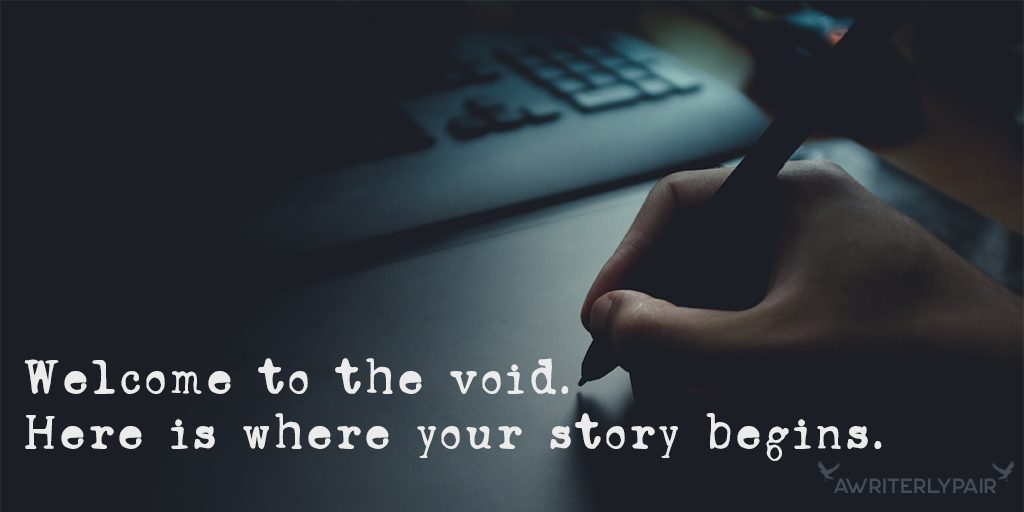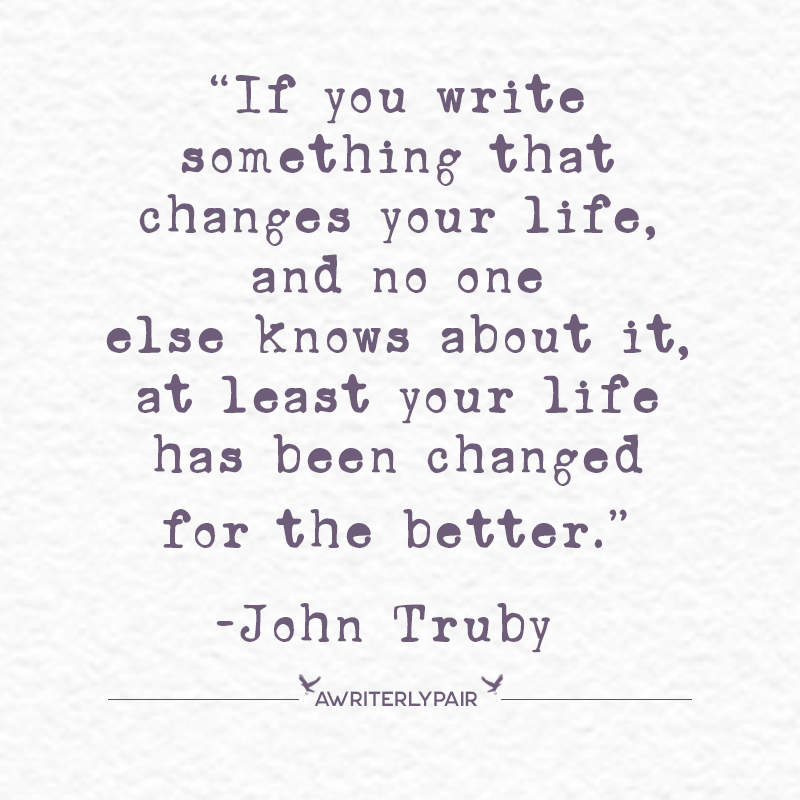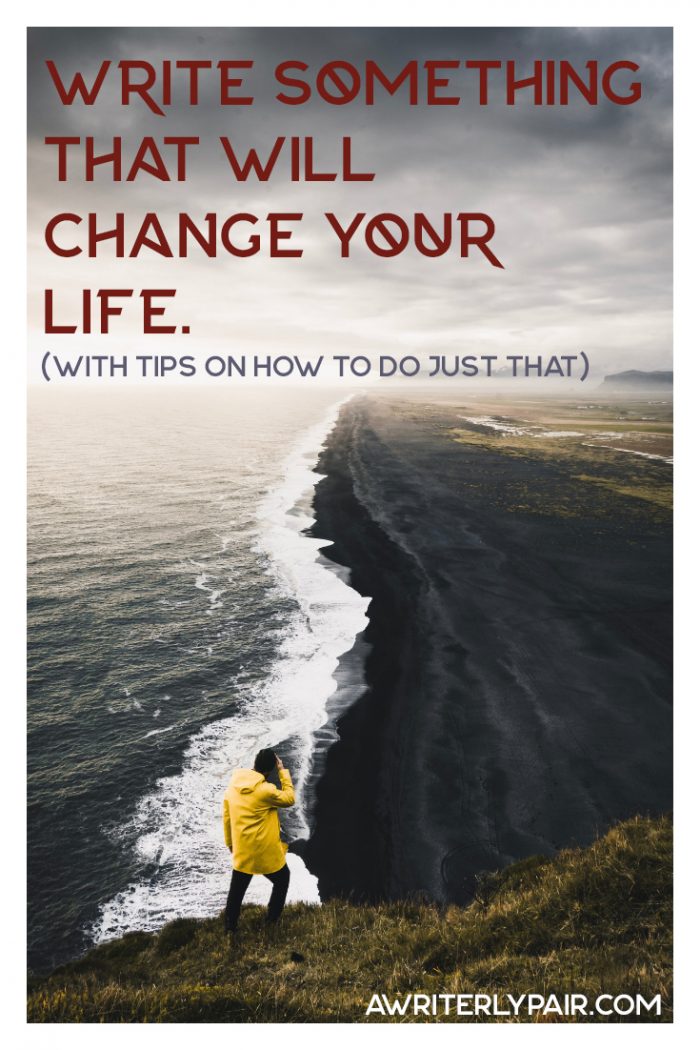Do you have an amazing character floating around in your head, banging on the proverbial door to be let out? Or maybe you have this beautiful world you’ve created, and you are just itching to show it to the rest of us. Or perhaps you have no real ideas, but are anxious to create something all the same.
This article is designed to help you gain a better sense of direction and footing in your creative process. A bit of advice before we get started:
You do not should not complete these exercises in one sitting.
It takes roughly nine months to create a human being, and you are creating several at once; along with individuality, motivations, and years or decades— maybe even centuries of backstory. And we haven’t even mentioned setting, time, possibly magical systems and governments, or character arcs. Don’t get over eager just to hit a brick wall thirty pages into your manuscript.
Matti and I sat on our story idea for two years before we really got going. While we would be cooking dinner, washing the dishes, or going for a drive, we would talk about what kind of story we wanted to make. We would talk about our main character and how his choices reflected on our theme; how he would interact with some of the other characters we had imagined. Then we would get so excited and go to write, only to be able to squeeze out maybe a paragraph or two.
We knew what was going to happen, we knew where they were and who was talking, but it was so shallow. There wasn’t enough emotion. Hardly any depth.
Then one day, we didn’t just feel excited. We felt ready. Sure, we didn’t have all the pieces yet, but some things you need to discover and dig up as you go. Before we could get to that point, we needed to sit there in the darkness of the world we had created and feel our way through the void, discovering what worked and what didn’t, what could stand on its own, and what cracked the foundation.
So welcome to the void. Regardless of how much you can see at this point, I hope by the end of this exercise you begin to see more of the beauty and complexity of your story.

First, I need you to get a piece of paper and something to write with. Or a blank doc on your computer. I don’t care. Just follow your heart 😉 Maybe I should have mentioned that earlier. Sorry, but it’s cool, I’ll wait.
Ready? Shveet. As you write out your responses, make a note of any characters, plot twists, settings, etc. that pop into your mind. Don’t dismiss any of these ideas! That’s your good ole trusty subconscious giving you little gems of creativity.
Step 1
Write down everything you love in a story. This can be any medium; a book, a movie, a video game, graphic novel, a, um. . .radio special. . .I dunno. Everything you can think of. What kind of characters do you love? What tropes make you laugh time and time again? What settings fill you with awe and wonder?
Now write down what frustrates you. What makes you turn the TV off, or close the book with a huff? What makes you go on IMDB and make your first ever review just because you are so mad?
Now disregard stories for a minute and write down what you’re passionate about. What beliefs do you hold that truly identify who you are? What drives you? Energizes you? What brings you joy and lights up your eyes when you talk about it?
What demons do you hope to overcome someday? What fills you with genuine fear and crippling self-doubt? What insecurities slither up to whisper in your ear when you least expect it?
You better not be scratching out or rejecting anything! Acknowledge every idea and appreciate it for what it is— an idea. Keep this page handy so you can look it over and add to it later on down the road on your storytelling journey.
Try to fill at least one page before moving onto this next exercise. The more pages you fill, the better.
Step 2
Look over your list you made earlier and try to make as many one sentence premises as you can. What’s a premise, you ask? Screenwriter John Truby and author of The Anatomy of Story defines premise as “the simplest combination of character and plot of your story, stated in one sentence.”
Let’s use Star Wars IV as an example (taken from Truby’s book):
When a princess falls into mortal danger, a young man uses his skills as a fighter to save her and defeat the evil forces of a galactic empire.
John Truby
Your premise is your inspiration; your ah-ha moment, the most basic, fundamental element of your story. Knowing this will keep you from deviating from your point, yet it’s short enough to give you the creative space you need to write your masterpiece.
And what does a premise have to do with that not-so-little list I had you make earlier? Simply put, if you write about what you love, chances are a few others will care about it too. No one will care (probably) much as you. It is your baby, after all. But there will be those who care a satisfying amount at least. Consumers can feel the amount of love, passion, and care put into a story. They sense when the creator is pandering, and can appreciate when they are taking risks.
And in the end, as Truby points out, if you write something that changes your life, and no one else knows about it, at least your life has been changed for the better.

I can only speak for Matti and myself, but there are few things that make us cringe more than a writer who is clearly writing a fulfillment of some fantasy. No disrespect to FanFic. It’s a fun genre and not the same thing as what I’m talking about. Take The Holiday, for example. Cameron Diaz’s character Amanda cannot cry, believes foreplay is overrated, and is a bit emotionally constipated, tbh.
Before I continue, I just want to say we love this movie. I think we watch it every year. Yes, Matti too. He loves a good romance movie. But she is basically any tool’s dream girl. She’s aloof, eager to have sex with a (handsome) complete stranger, and won’t waste your time with all that annoying crying women do. Every time I watch that movie, I feel like some screenwriter created her like that in a way of showing what his (or her) ideal woman would be.
I’m not saying you cannot create characters that you would love or approve of. Far from it! If you want to create memorable characters more people will relate to, then give them depth. Take those qualities and elements you love and then keep digging. We all have flaws. Real, ugly flaws we would prefer to keep buried deep in our closets. You can create lovable characters that also drive your readers nuts sometimes. Pretty much everyone I know and love has driven me nuts at one point or another. Come to think of it, the more I love them, the more those things annoy me. Your readers should feel the same way, because it shows they care.
These exercises should give you a pretty solid start to your story. I actually did this about six months ago on my own and timidly shared my ideas with Matti. He ended up LOVING one of them, so hopefully we will have something to show you someday soonly-ish. Let me know how it goes for you in the comments!
Sjáumst síðar!
-Shy






